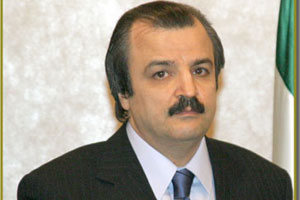By Mohammad Mohaddessin, Chairman of the Foreign Affairs Committee of the National Council of Restance of Iran (NCRI)
Published in Arabic in Saudi Arabian daily Al-Watan on 27 June 2015
The closer we come to the June 30 deadline in the negotiations between the Iranian regime and the P5+1 countries, the more the real intentions of the mullahs in their nuclear projects and the deadlocks they face become clear. In a speech on June 23 to officials of the regime, the mullahs’ Supreme Leader Ali Khamenei strongly rejected “inspection of military facilities and interviews with Iranian scientists.” He said: “Contrary to US statements, we do not accept long term restrictions of 10 or 12 years [on Research and Development].” He added: “The economic, financial and banking sanctions, whether set by the Security Council or the US Congress or the US administration, must be lifted the moment an agreement is signed … the lifting of sanctions must not be conditional upon Iran implementing its obligations.”
These three red lines once again confirm that which the Iranian Resistance has repeated since 1991 that the goal of the Iranian regime’s nuclear project is to obtain an atomic bomb. All the subsequent discoveries support this fact. The International Atomic Energy Agency said on May 29, 2015 that its investigation into the “possible military dimensions” of the regime’s nuclear project has reached an impasse because of lack of cooperation by the Iranian regime.
On April 18, the Deputy Commander of the Revolutionary Guards (IRGC), and on May 30, another senior IRGC official said the regime will respond to requests of visits by international inspectors at military facilities with “molten lead” and that the IRGC will arrest the inspectors as “spies”.
The Iranian Resistance on May 28 exposed recent cooperation between the Iranian regime and North Korea and exchanges of visits by officials involved in the nuclear and missile projects of the two countries. According to reports by the United Nations, the mullahs’ regime continues its dealings with active smuggling networks for purchasing uranium enrichment technology and banned compressors on the black market.
The party that has thus far prevented the regime from obtaining an atomic bomb has been the Iranian Resistance. Hassan Rowhani, the current president of the mullahs’ regime, wrote in his book “National Security and Nuclear Diplomacy” (published in 2012): “The Atomic Energy Organization of Iran thought that we should first complete the construction of the Natanz center and then inform the IAEA so that they would face a fait accompli and Western noise would not prevent the work, and furthermore it had promised our leadership that it would produce 30 tons of nuclear fuel at 3.5% using 54,000 centrifuges by 2003.” But in 2002 “the [People’s Mujahideen], held a press conference (to unveil Natanz and Arak) and made a lot of unfounded accusations and created a lot of noise.”
This is a stark acknowledgment that the Iranian regime had intended to impose itself on the international community as a nuclear power by pursuing a fait accompli policy.
On the other hand, Khamenei has tied his fate and that of his regime to the production of an atomic bomb, thus bringing the regime at a crossroads: either continuing the program for a nuclear bomb leading to tighter sanctions and confrontation with the international community, or abandoning the nuclear bomb leading to the collapse of the velayat-e faqih regime.
The regime’s main tactic in the negotiations – to stall and buy time and make the international community be faced with a fait accompli – is the result of this impasse and the deadly crossroads that the regime faces.
The US administration’s very weak and destructive policy, which has bizarrely tied US foreign policy to an agreement with the regime, is what allows the regime to pursue such tactics. The Iranian regime tells its closed domestic circles that “Obama and Kerry are a historic opportunity for the Islamic Republic.”
The mullahs’ regime hypocritically portrays its nuclear project and the issues that arise from it as defense of the right of Iranian sovereignty, enjoying popular support at home. This is a big lie. The Iranian people believe that the nuclear project is one of its most unpatriotic activities, for which the Iranian people have suffered and will continue to suffer for decades.
The grand gathering of Iranians on June 13, 2015 in Paris presented a model of Iranian society and the desire of the Iranian people. Participants with one voice strongly rejected the Iranian regime’s nuclear projects, demanded the implementation of the UN Security Council resolutions aimed at preventing the Iranian regime from obtaining a nuclear bomb, and declared their full support for the 10-point plan of the president-elect of the Iranian Resistance Mrs. Maryam Rajavi, which calls for a non-nuclear Iran.
In the same gathering more than 600 prominent political figures from the US, Europe and the Middle East declared their support for the program that has been presented by Mrs. Rajavi and called for the implementation of the UN Security Council resolutions and unconditional and unrestricted inspections of all military and civilian sites in Iran.
In the current balance of power, especially considering the relatively different positions taken by European countries in the negotiations, the countries in the region can block a bad deal that would leave the door open for the Iranian regime to become a nuclear power.




